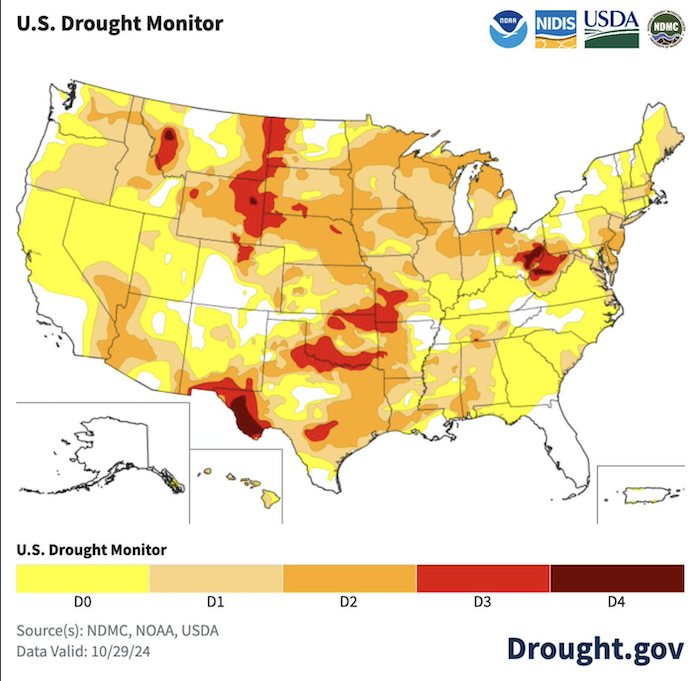Nearly half of the United States is experiencing a flash drought, causing fires in the midwest and hampering shipping along the Mississippi River. In one-eighth of the area of the continental United States, no rain was reported for the first 28 days of October, and about 93% of the continental U.S. is seeing below-average rain in October, most with less than an inch, according to climate center data analyzed by The Associated Press.
According to reports by the Southern Regional Climate Center and Midwest Regional Climate Center, more than 100 different long-term weather stations in 26 states, including Alaska, are having their driest October on record. The Associated Press (AP), in an Oct. 30 overview of National Weather Service records, also reported that “Cities that have had no measurable rain for October include New York, Houston, Dallas, Philadelphia, San Francisco and Sioux City, Iowa, along with normal dry spots such as Los Angeles, Las Vegas and Phoenix. The AP further noted this includes the Southeast, where Hurricane Helene caused deadly and destructive flooding in late September, but has received only one one-hundredth of an inch in October.
Data from the US Drought Monitor now has nearly 50% of the country experiencing drought, while that figure was 12% in June. The Associated Press report added that, according to US Department of Agriculture meteorologist Brad Ripley, a drought monitor author, this situation fits the definition of “flash drought,” which is different from normal slowly developing dry spells. It noted a 2023 study which showed that “a warming world from the burning of coal, oil and gas is causing more frequent and damaging flash droughts,” referencing costly and damaging droughts in the US in 2012 and in China in 2022.
Offering insights on weather’s impact on agriculture from USDA’s Ripley, AP reported he said: “The Mississippi River, a major transporter of crops, is at levels so low that shipping loads have to be constrained. It’s the third straight year of problematic water levels on the river. When Helene struck the Southeast and flooded North Carolina and Tennessee in late September, it provided a burst of fresh water that helped return Mississippi water levels to where they should be, but it didn’t last.” According to AP, Riley also said, “It may hurt the transporting of agricultural products, but luckily for farmers the flash drought came in after harvesting corn and soybeans. But dry fields mean a situation ripe for wildfires in both the Midwest and East. Farm equipment has started a lot of fires accidentally.”
Five large uncontrolled fires earlier this week had burned more than 1,000 acres in the East and Midwest, according to the National Interagency Fire Center, the report noted. Looking ahead, portions of the Midwest will see some relief with rain coming from storm systems from the West, although much of the East and Southeast are not expected to see precipitation in the week ahead.
Related Content:






